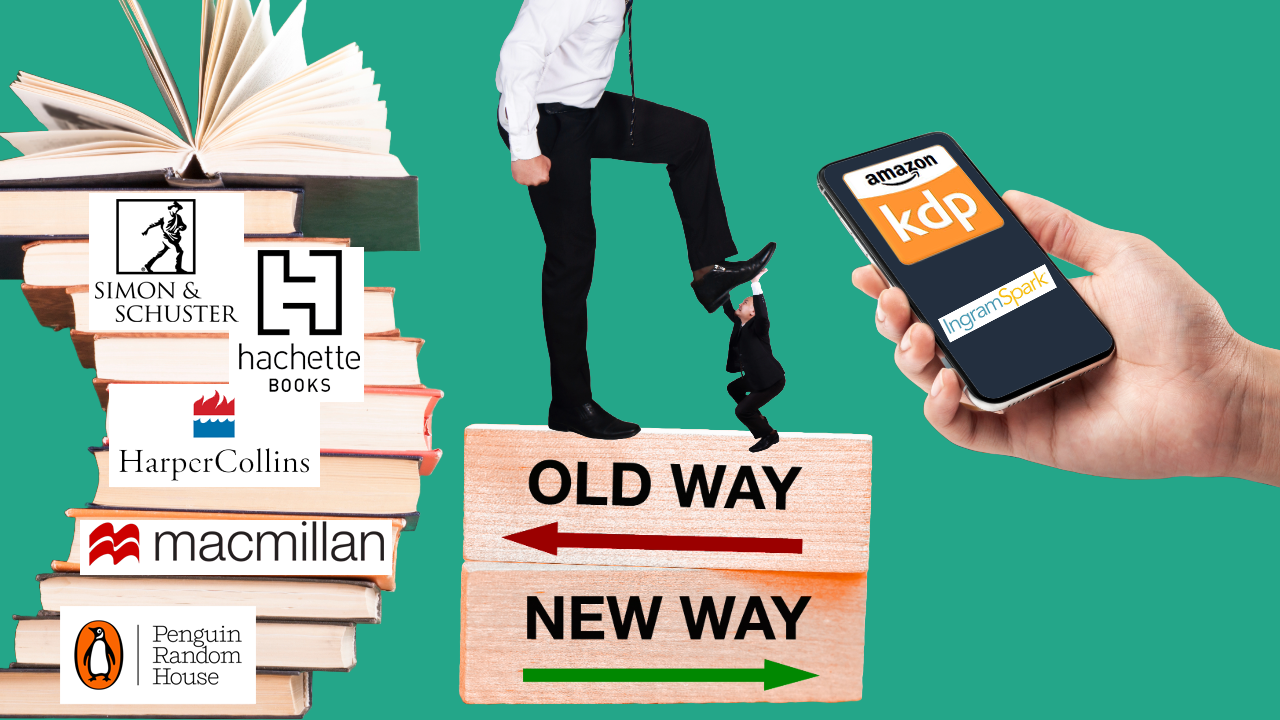How Do You Want to Publish Your Children’s Book?
So, you’ve written a children’s book! Now, the million-dollar question: how do you publish it? Do you want to go the traditional route, get cozy with a small press, or go all-in and self-publish? Maybe hybrid publishing—where you pay them and still do some work—is more your speed. Don’t worry, in today’s post, we’ll break down the options so you can decide which path best suits your masterpiece. And yes, I’ll be sharing a few personal stories about my experiences with KDP and IngramSpark. Spoiler: it was a journey.
The Big 5 Publishers
(Where Dreams Go to Wait)
First up, the Big 5: Penguin Random House, HarperCollins, Simon & Schuster, Hachette, and Macmillan. These industry giants publish roughly 80% of all books in the U.S., so getting your manuscript through their doors can feel like winning the lottery… if the lottery also involved getting an agent, surviving an editorial team, and hoping your book fits their marketing plan for the next fiscal year. Actually, it sounds a lot like trying to break into Hollywood. Maybe if I bat my eyes a little more…
If you do make it into the Big 5 though, you’ll have a dream team helping you with everything from editing to distribution. That is, assuming your book doesn’t get lost in their ever-growing pile of potential bestsellers.
Perks: Wide distribution and credibility.
Downside: Harder to get into than your town’s best preschool, and there’s a lot of waiting involved.
Small Publishers
(The Indie Coffee Shops of Publishing)
Next up: small publishers. Think of them as the indie coffee shops of the publishing world. They might be smaller in scale, but they cater to niche markets like regional interests, religious works, or specific genres. With small presses, you’ll likely get more personal attention, and they might be more willing to take a risk on a fresh, new voice (that’s you!). Unfortunately, the advance will be more tall than venti…
Perks: More personalized service and a niche audience.
Downside: Smaller advances and a narrower distribution network.
Hybrid Publishing
(Pay to Play, but You Get a Team!)
Hybrid publishing is a middle-ground option where you chip in some (or all) of the funding but still get the benefit of a professional publishing team. They’ll help with editing, design, and sometimes even marketing and distribution. However, your book will typically reflect their style, so you don’t get total creative freedom.
This can be a great option if you want to retain some control without doing all the heavy lifting. Just be sure to carefully vet your hybrid publisher—some are great, others… not so much. Check out the books they’ve already published and make sure you like what you see. Talk to some of their authors. Don’t get scammed.
Perks: You get a team without giving up all control.
Downside: You’re paying for that team, so be sure it’s worth it!
Self-Publishing
(AKA Control Freaks Unite!)
Now for my personal favorite—self-publishing! If you want to call all the shots, self-publishing is your path. You’ll be in charge of everything from book design and file prep to printing, marketing, and distribution. The best part? Creative freedom. Your book will be exactly how you want it, with no compromises. The flip side? It’s all on you, including the budget.
You can hire professionals for editing, design, or marketing (and trust me, you’ll probably want to), but be prepared—every hired hand comes with a price tag. If you are an entrepreneurial spirit like me, though, it’s incredibly rewarding.
Perks: Total creative control and higher potential profits.
Downside: A lot of personal effort, and you’re footing the bill.
KDP
(Kindle Direct Publishing – Amazon’s Brainchild)
KDP is Amazon’s self-publishing platform, offering both ebooks and print-on-demand paperbacks. It’s easy, it’s fast, and there’s no upfront cost. You get worldwide distribution through Amazon’s network, which is great for exposure. However, KDP has some limitations: hardback books? Nope. And while their quality works for novels, their print-on-demand quality isn’t picture-book perfect.
I personally set up Storm Trucks with KDP and ordered proofs… and I must confess myself… disappointed. (insert Voldemort’s voice). Yeah. But for paperbacks, especially for novels, it’s a solid option. Just be ready to follow their formatting requirements exactly.
Perks: Easy setup, no upfront costs, global distribution.
Downside: Limited quality control, especially for picture books.
IngramSpark
(For the Hardback Lovers)
IngramSpark is another print-on-demand option, but with more bells and whistles, including hardcover options and worldwide distribution to bookstores and libraries. If you’re looking to get your book into brick-and-mortar stores, this could be your ticket. However, their setup process is tricky (and I’m a techie person…), and they require you to set your price and discount to fit wholesale needs, which can cut into your profit margins.
I gave IngramSpark a try for Storm Trucks, but between the tough setup and the small profit per book, I decided it wasn’t for me. Some authors I know have had great success with IngramSpark, especially if their book aligns with school standards for libraries.
Perks: Hardcovers, global distribution, bookstore placement.
Downside: Difficult setup and lower profits.
Why I Chose Full-On Self-Publishing
After exploring all these options, I decided to take the leap into fully self-publishing Storm Trucks. I had a solid offer from a local hybrid publisher, but at the end of the day, the creative control and freedom to bring my vision to life exactly as I imagined was too tempting. It’s been a wild ride, but I wouldn’t change a thing.
I ended up sourcing quotes from printers both in North America and overseas and decided on a printer in China. Why? Because they offered the best price point and top-notch quality in 4-color offset printing. I also got to choose every detail—down to the paper thickness and cover finish. Yes, I’m that kind of person.
Money Talks
Self-publishing does mean you’re the one fronting the cash, though. With traditional publishing, the publisher covers the costs. In self-publishing, it’s all on you. So where do you get the funds? Well, that’s a topic for my next post, so subscribe to keep updated!
Remember, no matter which publishing path you choose, the most important thing is getting your story out into the world.




0 Comments